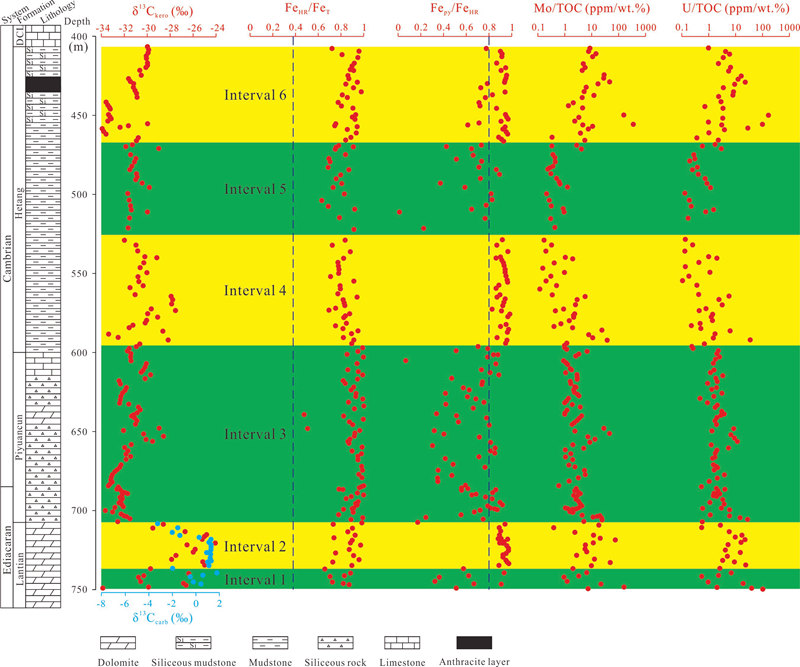
Stratigraphic distribution of geochemical results in this study
The major diversification of animal life known as the Cambrian explosion commenced at the end of the Ediacaran Period, but did not reach its peak until Stage 3 of Cambrian Series 2. This remarkable escalation of biological complexity has long inspired hypotheses about the potential intrinsic or extrinsic catalysts driving early animal evolution.
Environmental free oxygen is essential for the maintenance of many metabolic and physiological processes in metazoans, and low atmospheric oxygen content has often been viewed as a barrier to the evolution of large, metabolically active animals. Existing studies have found some evidence for oxygenation events in Cambrian Series 1-2, but the temporal relationship between Cambrian oxygenation and the Cambrian biological explosion remains controversial.
For this study, XIANG Lei from Nanjing Institute of Geology and Palaeontology, Chinese Academy of Sciences and his colleagues conducted a series of geochemical analyses on the upper Lantian, Piyuancun, and Hetang formations in a drill well, part of the lower Yangtze Block in western Zhejiang.
Iron speciation results indicate that the entire studied interval was deposited under anoxic conditions, with three intervals of persistent euxinia occurring in the uppermost Lantian Fm., the lower Hetang Formation (Fm.), and the upper Hetang Fm. Molybdenum (Mo) and uranium (U) contents and Mo/TOC and U/TOC ratios from the anoxic/euxinic intervals in this study, combined with published data from the sections in the middle and upper Yangtze Block, suggest that the oceanic Mo reservoir declined consistently from the Ediacaran to Cambrian Stage 3, while the size of the oceanic U reservoir remained relatively constant. Both metals were depleted in the ocean in lower Cambrian Stage 4, before increasing markedly at the end of Stage 4.
The lack of an apparent increase in the size of the marine Mo and U reservoir from the upper Ediacaran to Cambrian Stage 3 suggests that oxic water masses did not expand until Cambrian Stage 4. The increase in marine Mo and U availability in the upper Hetang Fm. may have been due to the expansion of oxic water masses in the oceans, associated with oxygenation of the atmosphere during Cambrian Stage 4.
This expansion of oxic waters in the global ocean postdates the main phase of Cambrian diversification, suggesting that pervasive oxygenation of the ocean on a large scale was not the primary control on animal diversity following the Ediacaran-Cambrian transition.
Download:
